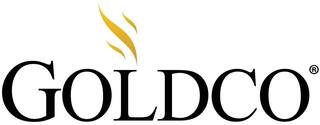These Wall Street Titans Say Buy Gold. Should You?
Money is not a client of any investment adviser featured on this page. The information provided on this page is for educational purposes only and is not intended as investment advice. Money does not offer advisory services.

As gold’s record rally continues — most recently hitting a new all-time high of $4,300 per ounce — even ordinarily skeptical mainstream financial luminaries have been taking a shine to the yellow metal.
In remarks at an economic conference earlier this month, hedge fund heavyweight Ray Dalio noted that today’s economic conditions are reminiscent of the early 1970s, with elevated inflation and high levels of government debt. He said makes the yellow metal a valuable hedge.
“If you look at it just from a strategic asset allocation perspective, you would probably have something like 15% of your portfolio in gold,” the Bridgewater Associates founder said at the Greenwich Economic Forum. “Because it is one asset that does very well when the typical parts of the portfolio go down.”
Dalio isn’t alone in his enthusiasm. “[Gold] could easily go to $5,000 or $10,000 in environments like this,” JPMorgan Chase CEO Jamie Dimon said at a conference this week.
In general, Dimon said, “I’m not a gold buyer. It costs 4% to own it,” referring to the opportunity cost of not holding productive assets such as equities. But he added that this market makes a compelling case for holding gold, saying, “This is one of the few times in my life [that] it’s semi-rational to have some in your portfolio.”
Given the undeniable financial bona fides behind these bullish sentiments, does that mean gold is right for your portfolio?
A look at the evidence
The spot price of gold has already leaped by some 60% this year and has blown through all-time highs with astonishing speed. By comparison, the broad-based S&P 500 is up about 14%. That’s above its typical annual increase of roughly 10%, but gold’s return far and away outpaces even this healthy return.
Here’s why: The historical demand drivers of investors seeking a hedge against elevated inflation and a safe haven from Wall Street volatility play a role. In addition, the current run of rapid appreciation is a function of central banks’ recent stockpiling of the yellow metal, combined with a growing appetite for and availability of gold in the retail marketplace — Exhibit A being warehouse club Costco’s smashing success selling gold bars.
Unfortunately, gold’s already-sizable gains mean that if you’re adding gold to your portfolio for the first time now, you’re paying a healthy premium to add it, points out Jay Hatfield, CEO and chief investment officer of Infrastructure Capital Advisors.
“It’s fine to have small amounts, but this is unlikely to be the ideal entry point [because] gold has turned into a bit of a momentum play,” he says.
"If anyone wanted to take a position, I would keep it modest, say 3% to 5%, and dollar-cost into it quite modestly,” Hatfield says. For instance, he suggests that an investor could add a quarter of a percentage point of the total value of their portfolio every month and build up to their desired allocation over six to 12 months.
Despite Dalio’s 15% comment, most retail investors are best served with less than that, says Will Rhind, CEO of GraniteShares. “For a diversified portfolio, we typically see clients with allocations of somewhere between 7-10% in gold,” he tells Money via email.
Make sure that allocation is significant enough to meet the goals you’re trying to achieve with a gold allocation, he adds. “You must hold enough for it to be mathematically relevant. In other words, holding 1% will not do much for your portfolio’s performance,” he says.
How to hold gold
As popular as Costco’s gold bars may be, experts say there are more efficient ways for everyday Americans to own gold.
In addition to the opportunity cost Dimon called out in his remarks this week, storing and insuring physical gold also carry costs, points out Sam Stovall, chief investment strategist at CFRA Research. “Physical bars can work for those comfortable with storage and insurance, but for most investors, ETFs are the simpler route,” he tells Money via email.
“We recommend owning gold mining shares over the hard metal," Stovall says. “We think gold mining stocks offer greater upside potential, since these stocks tend to rise at a multiple to the price change in spot gold.”
If you want to hold actual gold, Hatfield says the SPDR Gold Shares exchange-traded fund (GLD) — the first, largest and best-known gold ETF — is a good place to start. “I would recommend that investors hold gold through GLD, which is quite an efficient way to do it,” he says.
“If you want to hold gold as a diversifier of your portfolio, you should definitely hold it in GLD. It’s more liquid, it’s a security — if you want to sell it, you can do it in 10 seconds,” he says.
While GLD’s 0.4% expense ratio is nominal, “Investors who look a bit further can reduce costs with lower fee funds such as BAR at 0.17%,” Stovall says. Money’s guide to the best gold ETFs has other options for investors who want to diversify their gold exposure.
More from Money:
Gold Just Hit Another All-Time High. Will It Keep Climbing?
Will the S&P 500 Hit 7,000 This Year?
Gold Prices Can't Stop Breaking Records — Even as Stocks Slump





